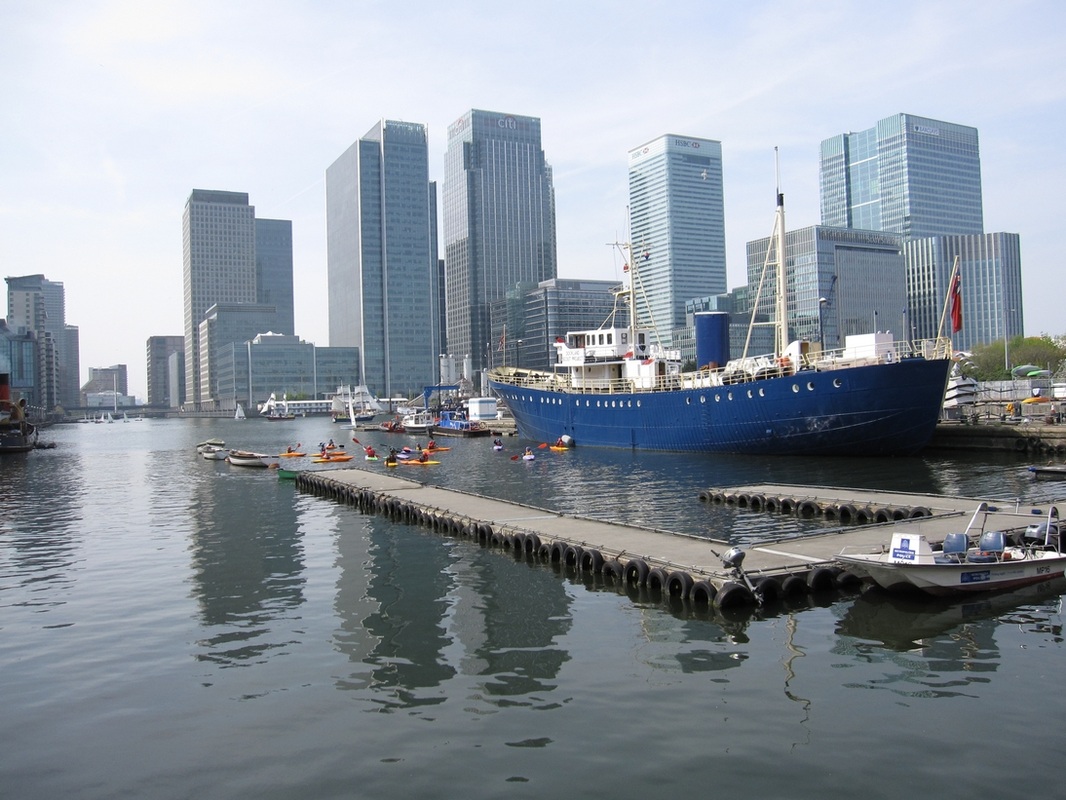London's Lost Canals - City Canal (aka Isle of Dogs Canal)
The City Canal crossed the upper part of the Isle of Dogs from Blackwall Reach to Limehouse Reach. The canal was built as a shortcut for vessels travelling to wharves further up the Thames to save them navigating around the 3-mile loop south of the Isle of Dogs. This was to assist West Indian merchants who threatened to take their trade to ports elsewhere where access was more easily accessible.
The three quarters of a mile in length canal with a lock at either end was built by The City of London Corporation with public funds and opened in 1805. The buildings which had previously served the area’s fishing industry were swept aside to make way for shipyards, dry docks and ironworks. By 1809 Coulson & Company had built an iron foundry, reputedly London's largest, called the Canal Iron Works. Pubs named City Arms (see below) and Canal Tavern were opened adjacent to the western lock.
Despite being a shortcut, the tidal Thames determined that it was still often quicker to just sail the long way round instead. Unable to attract sufficient shipping to pay for its maintenance, the canal ran heavy financial losses, and it was sold off to the West India Dock Company in 1829 whose main reason for purchase was largely to avoid it falling into the competitor’s hands. The canal was closed and changed its use into a timber dock. It was later enlarged and renamed South West India Dock which is now known as South Dock.
The original eastern lock entrance was rebuilt in 1931 and at the same time passages were made to link to the other docks on the Isle of Dogs. This lock is now the only working entrance from the Thames into the Docks. The western entrance is now blocked by a road and a pumping station, which was built by the Port of London Authority in 1929 to manage the water levels in the docks complex.
The three quarters of a mile in length canal with a lock at either end was built by The City of London Corporation with public funds and opened in 1805. The buildings which had previously served the area’s fishing industry were swept aside to make way for shipyards, dry docks and ironworks. By 1809 Coulson & Company had built an iron foundry, reputedly London's largest, called the Canal Iron Works. Pubs named City Arms (see below) and Canal Tavern were opened adjacent to the western lock.
Despite being a shortcut, the tidal Thames determined that it was still often quicker to just sail the long way round instead. Unable to attract sufficient shipping to pay for its maintenance, the canal ran heavy financial losses, and it was sold off to the West India Dock Company in 1829 whose main reason for purchase was largely to avoid it falling into the competitor’s hands. The canal was closed and changed its use into a timber dock. It was later enlarged and renamed South West India Dock which is now known as South Dock.
The original eastern lock entrance was rebuilt in 1931 and at the same time passages were made to link to the other docks on the Isle of Dogs. This lock is now the only working entrance from the Thames into the Docks. The western entrance is now blocked by a road and a pumping station, which was built by the Port of London Authority in 1929 to manage the water levels in the docks complex.
The City Arms pub was rebuilt in 1936 and later renamed The City Pride. The pub, seen on TV every year as the BBC broadcasted part of its London Marathon coverage from outside of this pub. Remaining popular with the local workforce, who these days consist of office workers, the pub was considered a rare alternative to the faceless chrome & glass franchised bar establishments in the vicinity but... it was bought by a development company for £32 million (officially the most expensive pub in the UK) and demolished in 2013 and since then, a 55-storey tower block has taken its place.




